The Five Hundred Meter Aperture Spherical Telescope (FAST) has taken five years and $180 million to build, but according China’s state media, the project was finished well ahead of the telescope’s planned September launch.
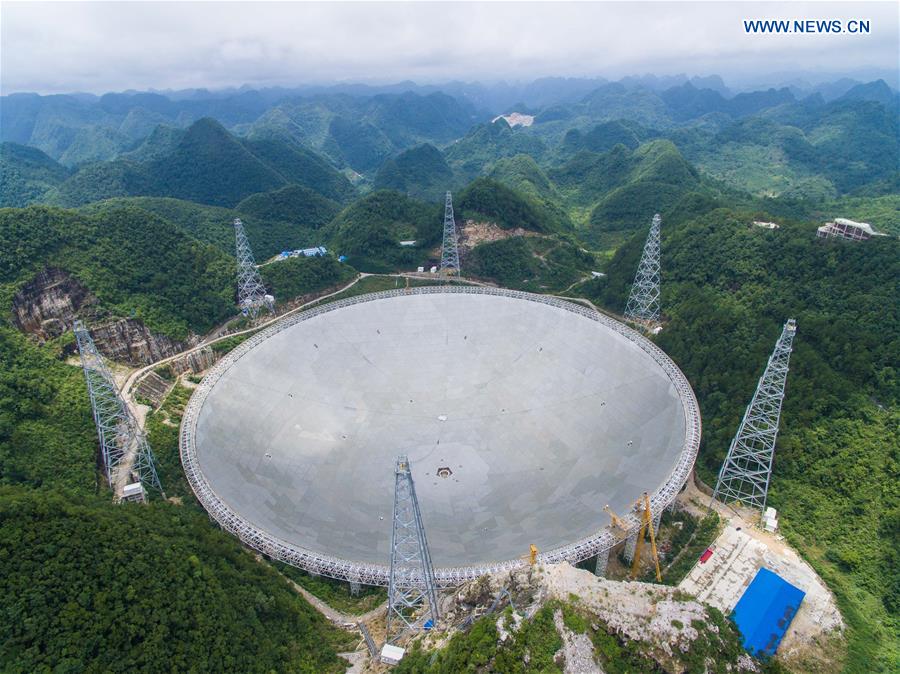
FAST, which is close to twice as large as the next largest radio telescope (Puerto Rico’s 300-meter-wide Arecibo Observatory), is located in a karst valley in Pingtang County in the southwestern province of Guizhou.
When it is fully up and running, it will be approximately 10 times more sensitive than the steerable 100-meter telescope near Bonn, Germany. Researchers will use this heightened level of sensitivity to search for extraterrestrial life as well as further understand some of the more peculiar oddities of the universe, including pulsars, quasars, and gravitational waves.
“The project has the potential to search for more strange objects to better understand the origin of the universe and boost the global hunt for extraterrestrial life,” said Zheng Xiaonian, deputy head of the National Astronomical Observation of the Chinese Academy of Sciences — the organization that built the telescope.
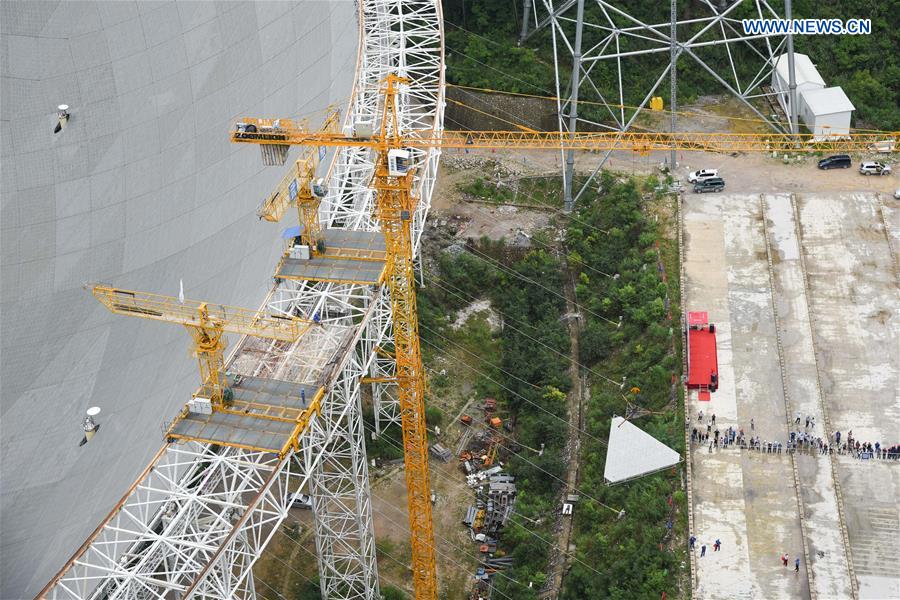
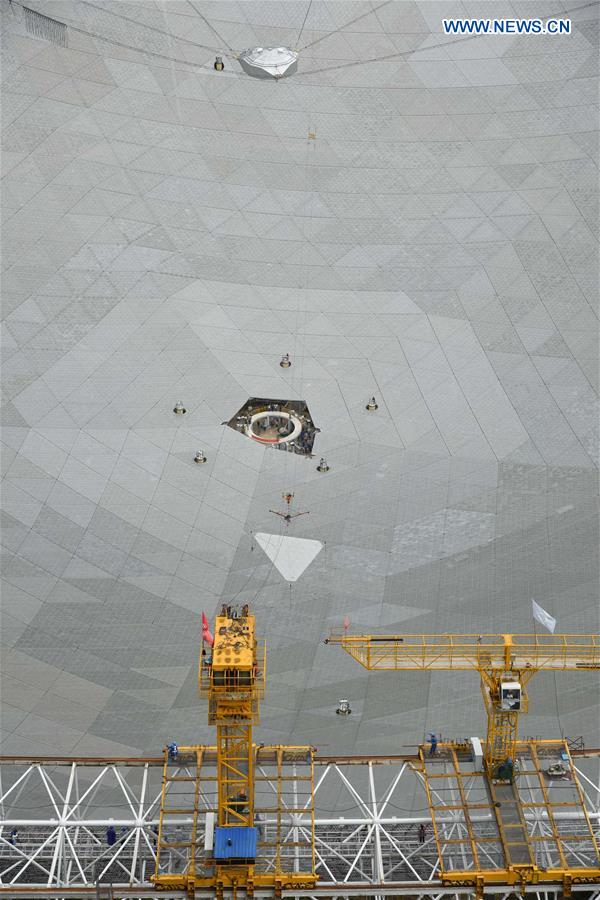
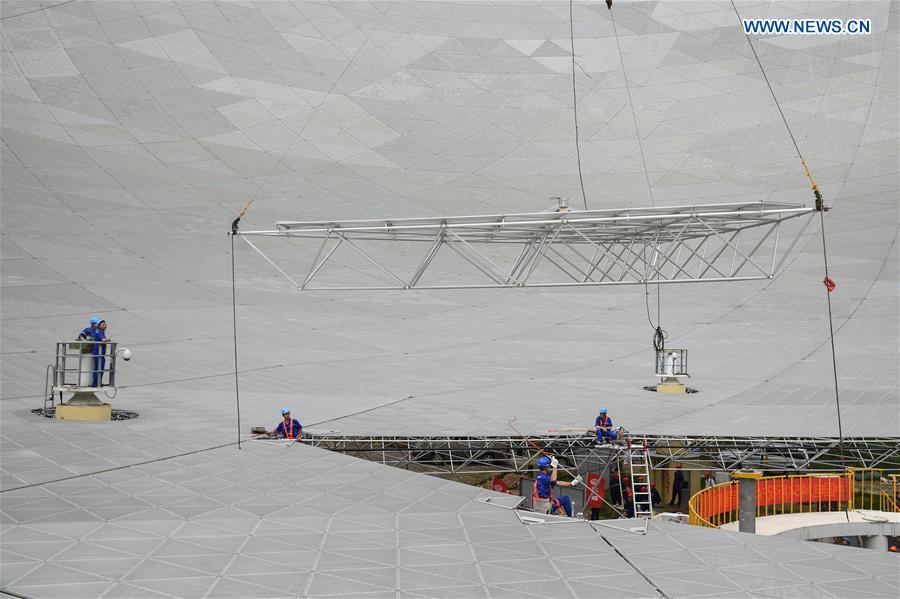
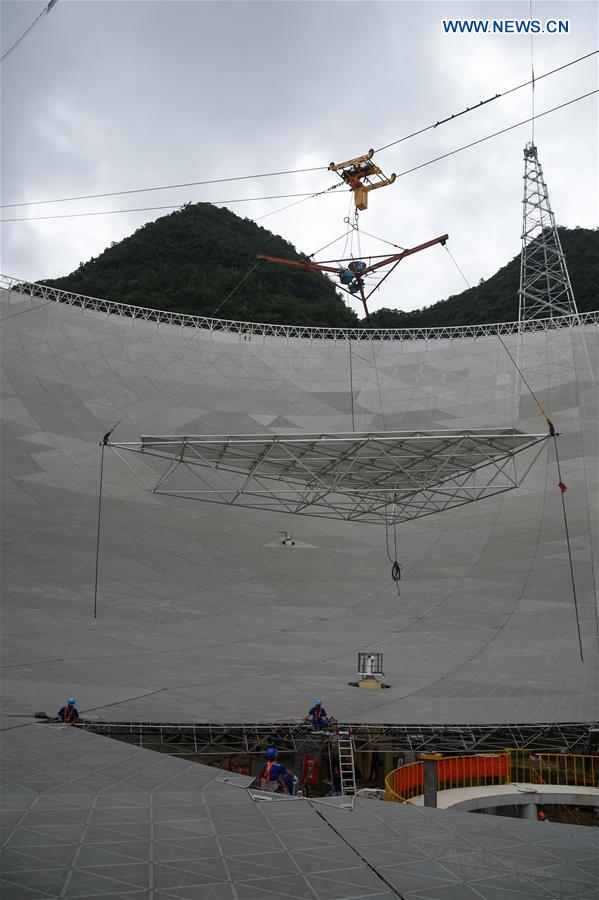
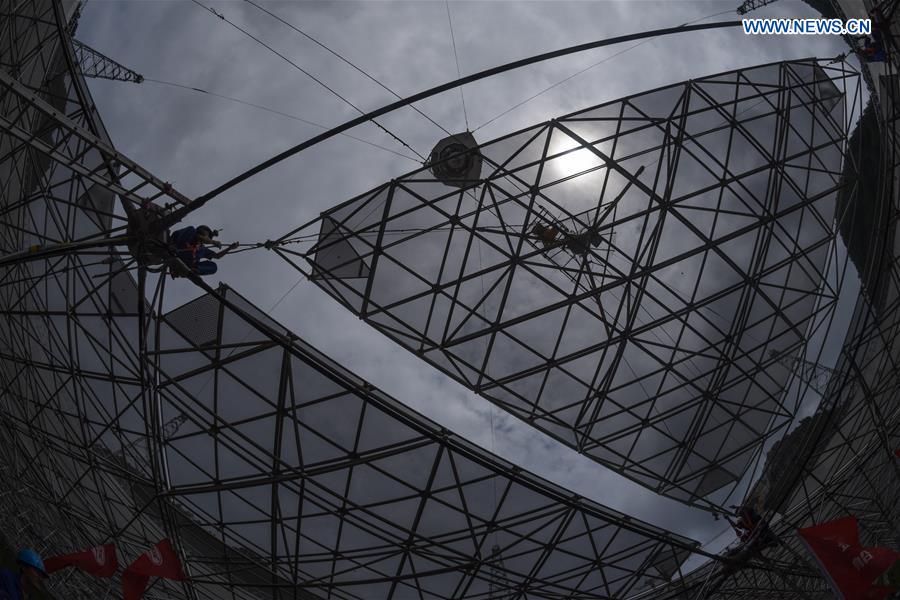
FAST is made up of 4,450 triangular panels, with most components coming from China. “Most of the technology and materials are domestically made,” said Wang Qiming, chief technologist of the FAST project.
Specifically, among the 7 FAST receivers, five were domestically made and another two were co-produced by Chinese, Australian and American institutions.
In terms of next steps, the telescope will undergo further adjustment in the next two or three years; during this time, Chinese scientists will use it for early-stage research. After that, FAST will open to scientists worldwide, said Peng Bo, director of the NAO Radio Astronomy Technology Laboratory.
As far as usage, scientists will be able to carry out remote control of the telescope as well as observation in other cities such as Beijing, more than 2,000 kilometers from the telescope site, said Peng.
Finally, when it comes to expectations, FAST is expected to afford astronomers a jump-start on many scientific goals; this includes things like surveying neutral hydrogen in distant galaxies and detecting faint pulsars.
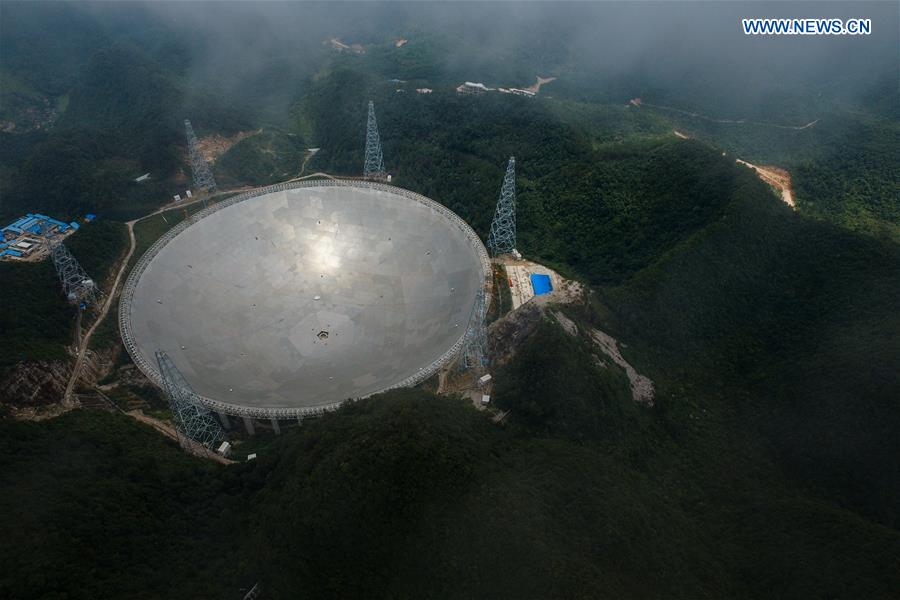
Via XinhuaNet.com
Advertisement
Learn more about Electronic Products Magazine





